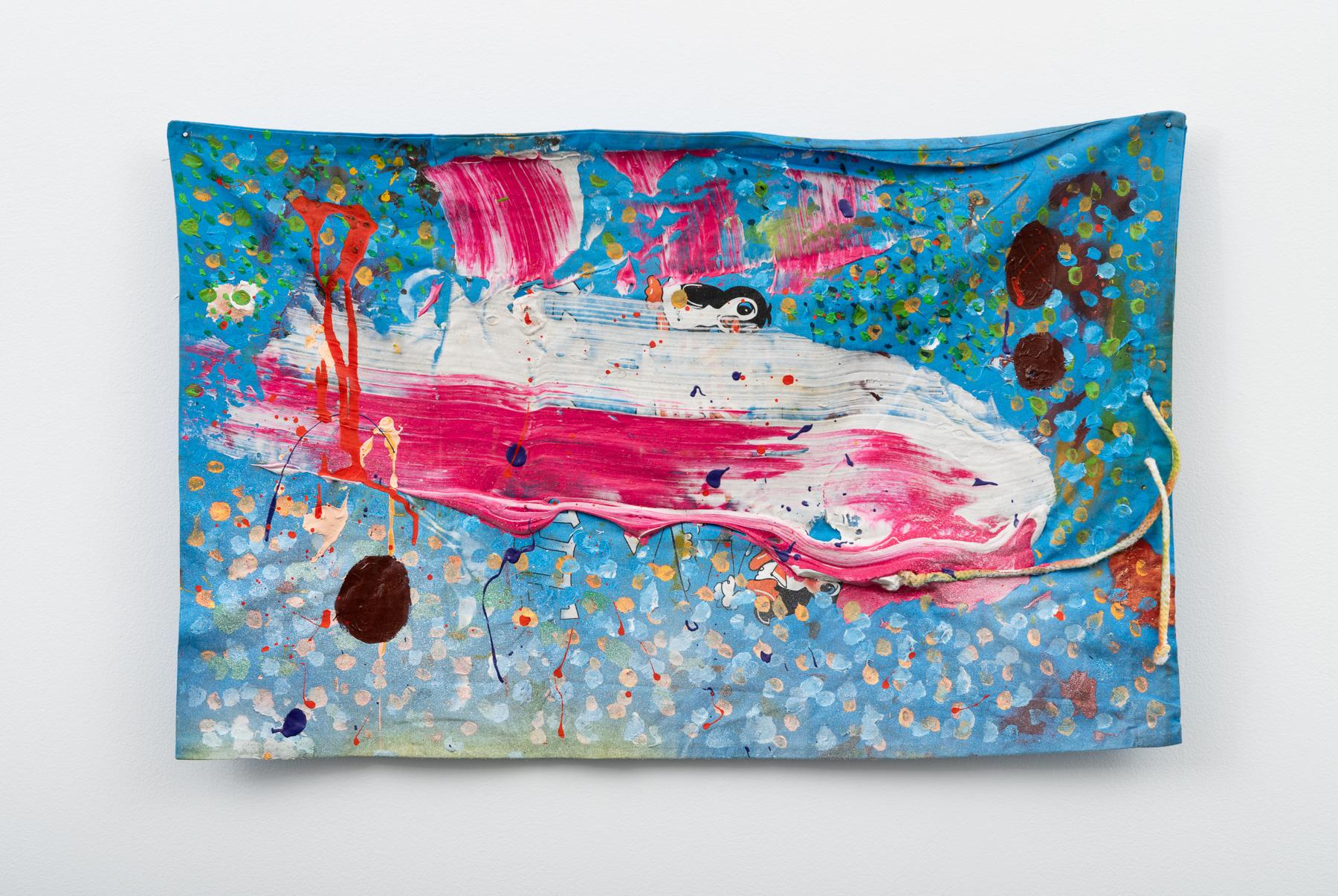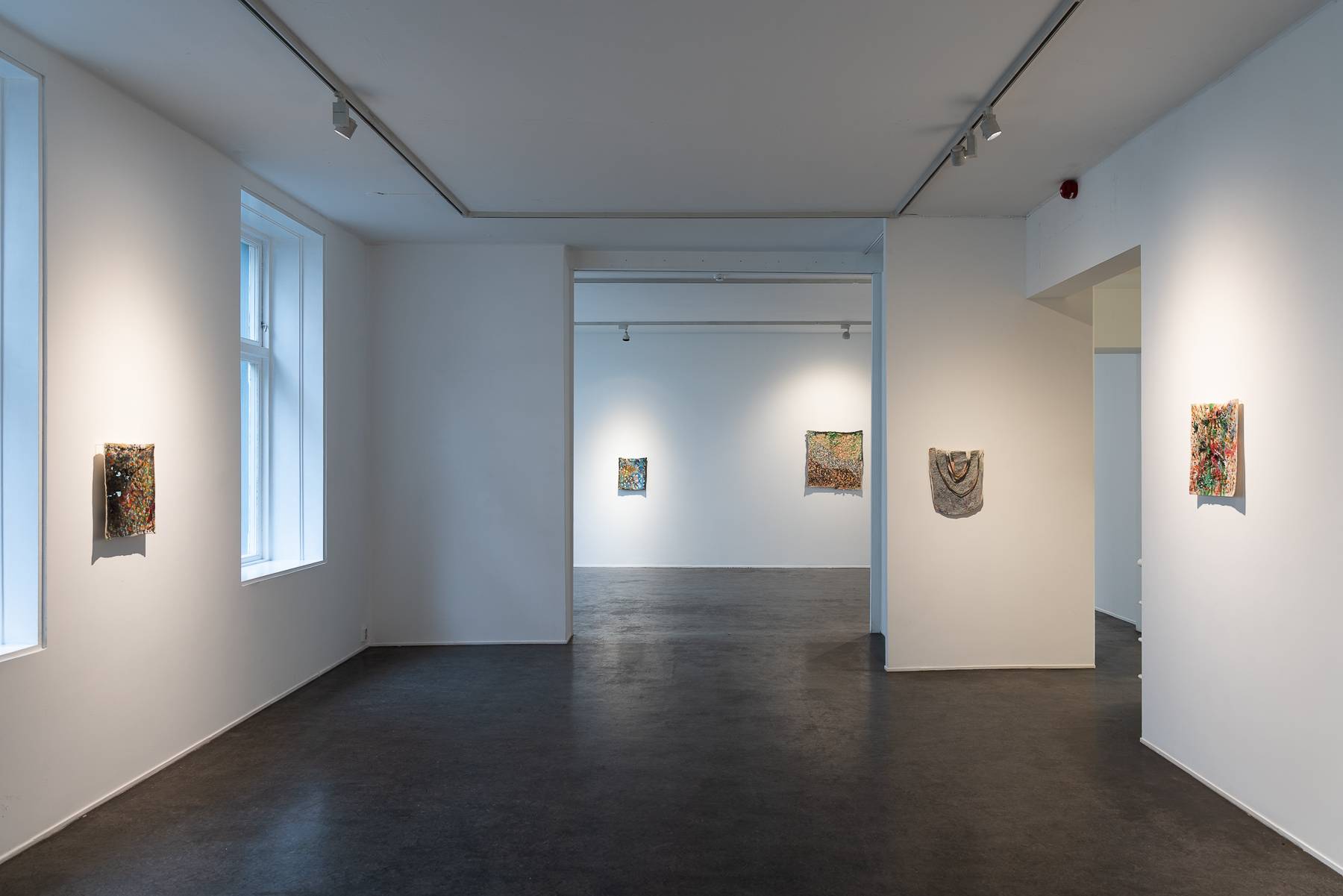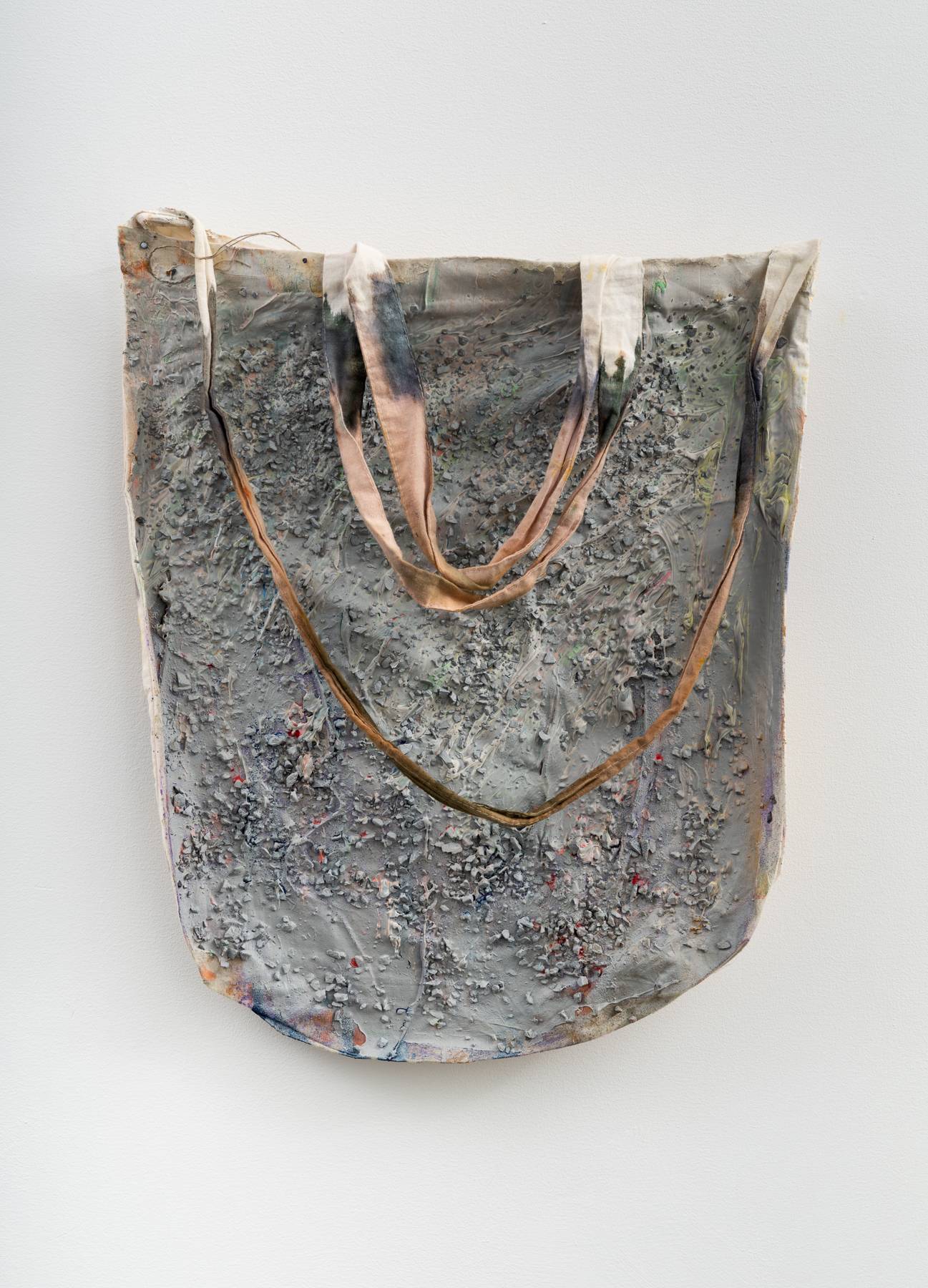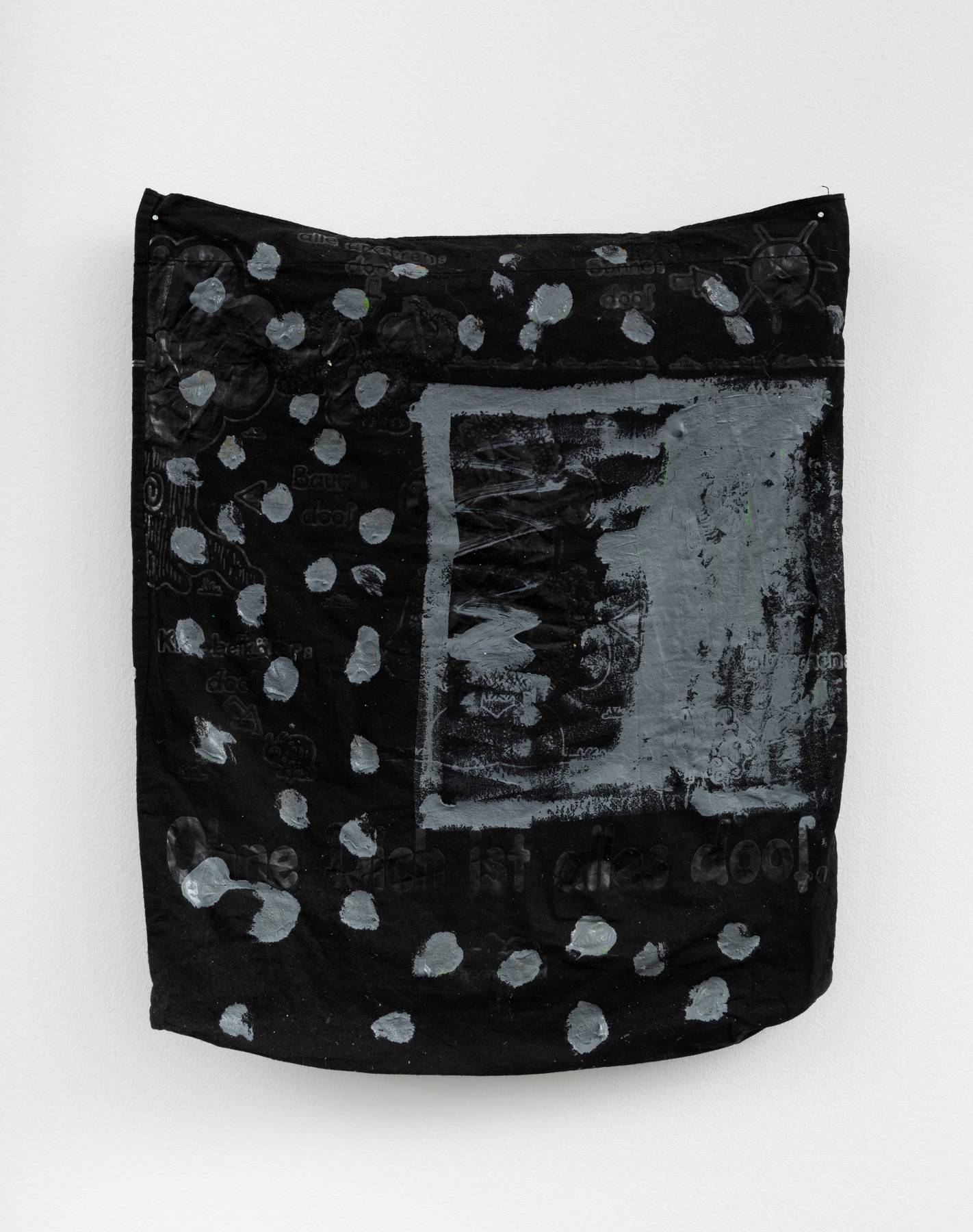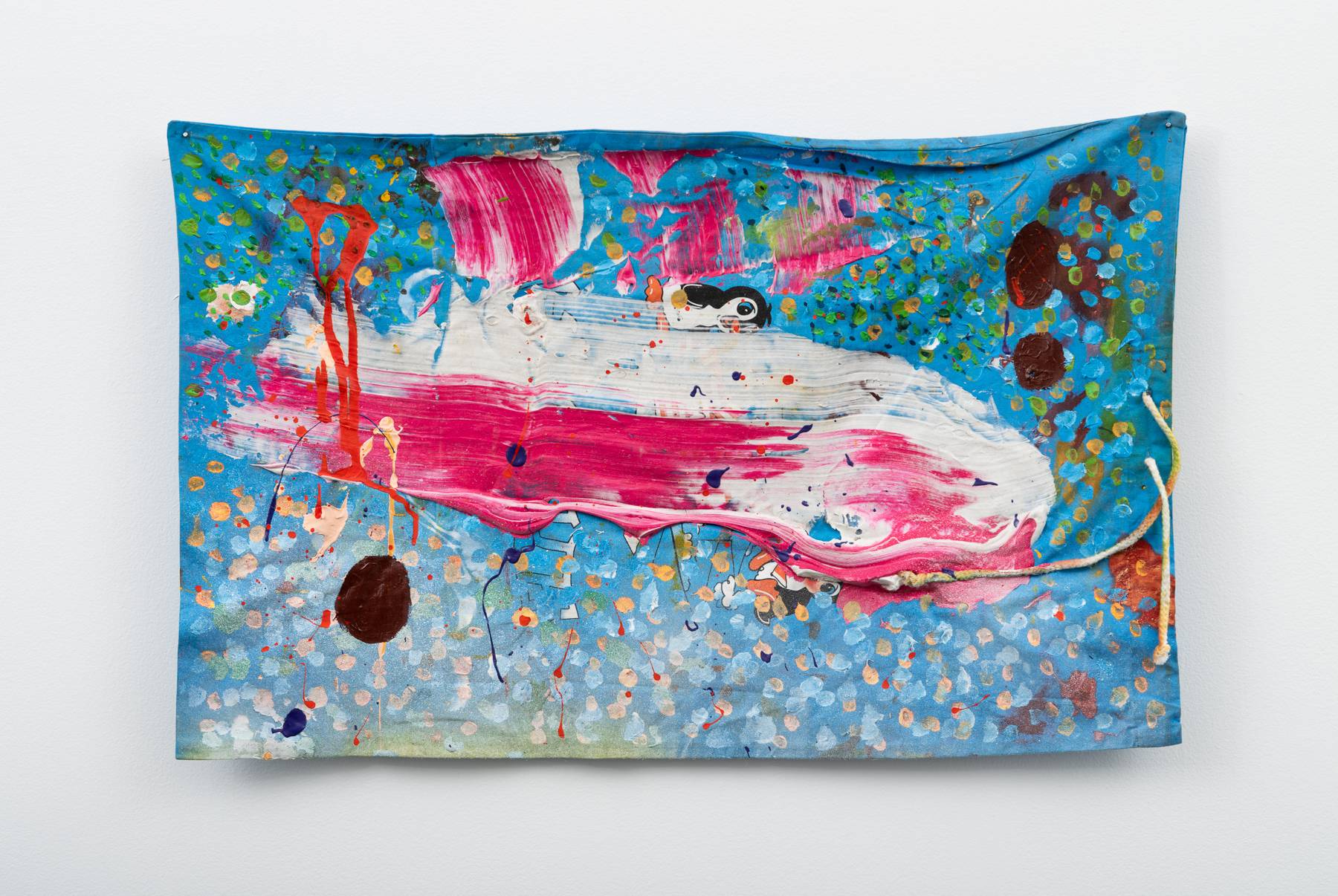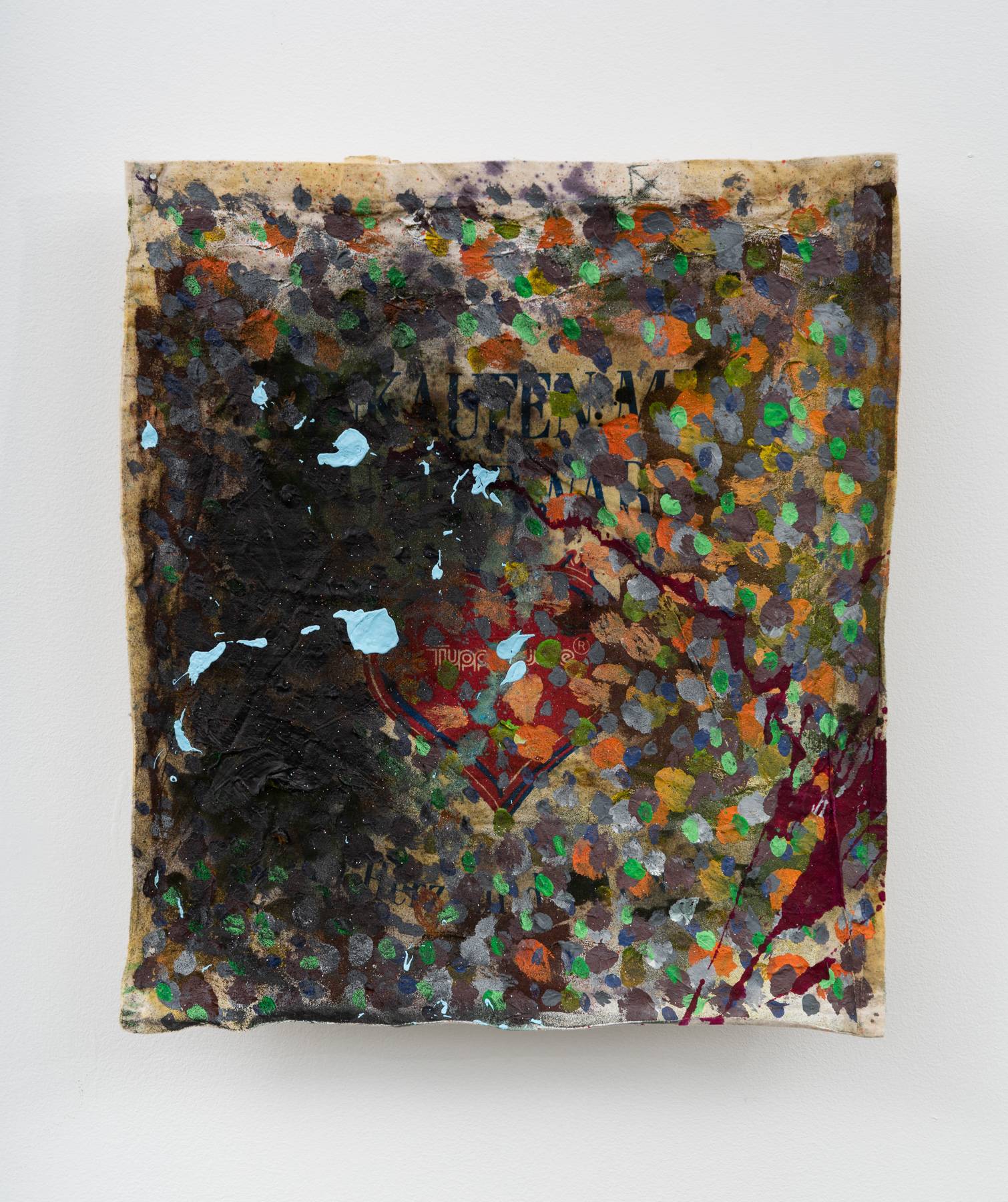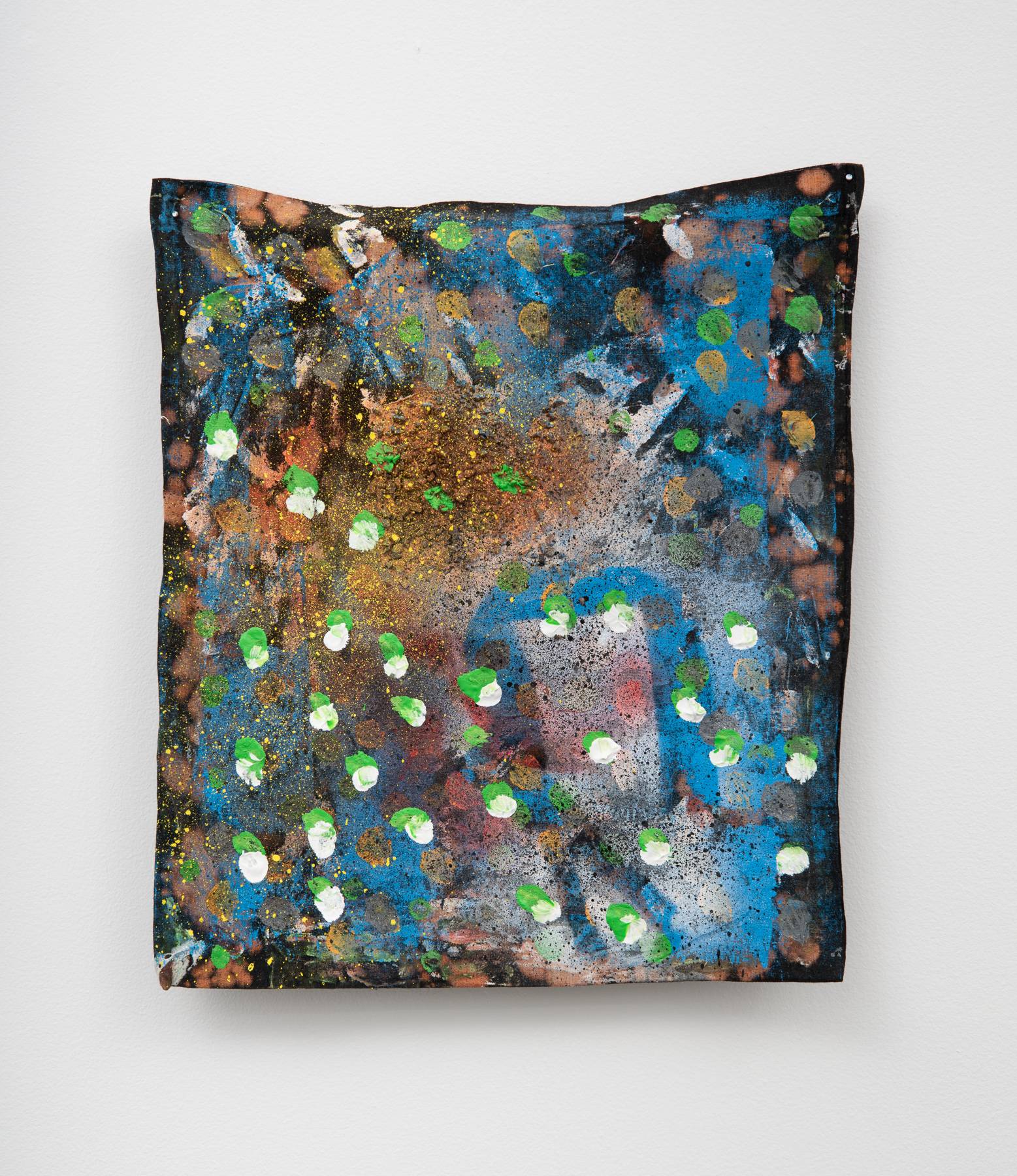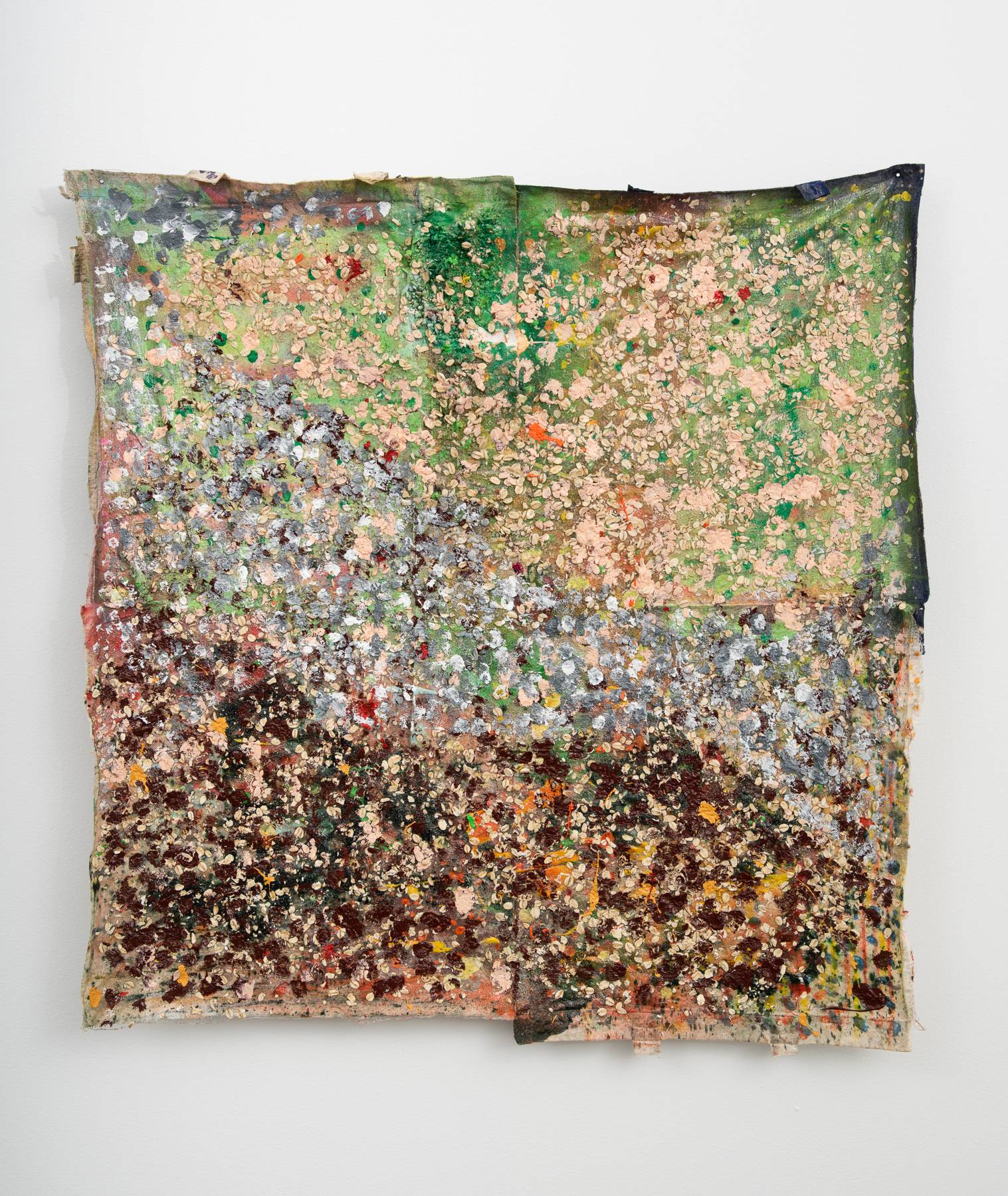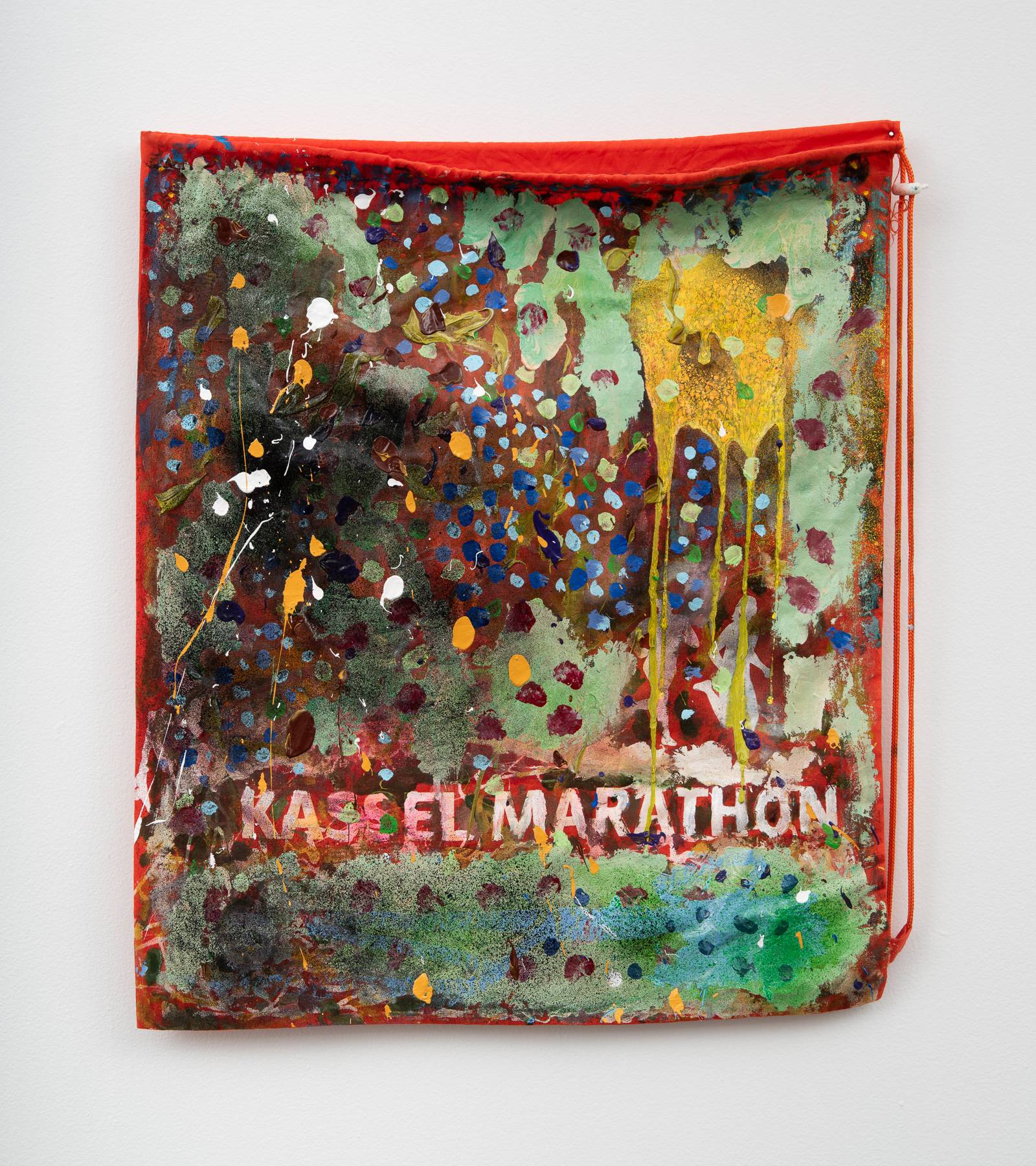Mickael Marman
Gemælde
The exhibition spaces on the 1st floor
12.01.–19.02.2023
What do you get when you get a tote bag?
Tote bags are what, in psychoanalytic terms, we might call overdetermined, that is, caused by multiple factors, both trivial and potent. But where dreams, as were Freud’s concern, are private and often elude memory, tote bags achieve their special significance precisely from being excessively public, at once sign and signification, container and contained. This does not mean that we are able to control what they say about us anymore than we are able to control our dreams. Is it possible to bring a bag to the supermarket without revealing your personal punctum? Is there such a thing as a blank canvas? No and no.
While on a trip to the Atlantic coast of Morocco – long a destination for artists – Mickael Marman discovered that the local tote bag craze was for provincial German motifs: a Rheinland Sparkasse; an apothecary in a village on the border between Hessen and Thuringia; a marathon in Kassel. Quite sophisticated, I should say. Marman became interested in the strange presence of these bags in this unlikely location and began to rummage through secondhand shops looking for them. There, he might catch the eye of a fellow tote scavenger. Would they have to compete for the same bag? The shop keeper would also start to grow suspicious. What did these people, so hungrily digging through the piles, see in the tote bags that the shopkeeper did not? And what, then, should be their price?
We could say that tote bags speak by a meme-logic, coded and contextual; what a given bag means in one place and time will quickly slip and become unreadable in another. For art lovers, for instance, a Tate tote would defeat the purpose – too obvious – but on the right person, say, someone studying in the class of Michael Krebber, a Mona Lisa or Monet tote could actually be just right. This would be a typical post-tote position.
The logic is familiar to us from paintings. For much of art history, it would be necessary to know this or that biblical story or ancient myth, as well as how they had been previously interpreted in art, in order to read a painting. Now, in a certain corner of the German art world especially, the references that must be decoded are subtle nudges between professors and their students and former assistants. Every decision, especially those made not to do something, is pregnant with meaning. The fact that few people can read them is both what makes them so intriguing and their system of signification so claustrophobic.
One wishes one didn’t have to carry a tote bag, as, with Sartre, one might wish for the existence of a plant. But – God damn it – how do you do without? This question is related to that asked by many artists of how to do without painting. How nice it would be to come up with something fresher, less laden with signification, convoluted to the point of banality. Marman's tote bag paintings are full of those questions, and even take a stab at coming up with an earnest answer to them.
And so what does oil on canvas mean when it is oil on canvas bag and the bag went from Germany to Morocco and back again? It is a story about de- and re-valuation; the hopes and promises issued by objects, and the systems of meaning by which they travel – though, crucially, the bags do not get to hang there in authentic plainness and speak to their journey around the world in a blunt yet vague gesture at capitalism, globalization, the environment, or worse: the anthropocene. Rather, they are paintings like all other paintings, their origins obfuscated, their chance of beauty impaired though not entirely ruled out. We might see in them a starry sky, an unruly sea, or a reference to actionism. The accumulated layers of color and material exacerbate overdetermination to the point that the battered bags become more presence than sign, less about selfhood than existence. Marman just keeps on painting.Who would have thought that painting’s problem could also be its solution?
There was reason and profound impulse behind that first tote bag you chose to drape over your shoulder. You wanted something from it; it meant something. And it is in the moment when you remember what that was that the meme-logic is suspended and another kind of mattering kicks into effect. Marman’s paintings, too, work in this way: to elevate, condense and hold still, if only for a moment, inside that square of tote, whatever it was you wanted, as if to say: it is still there, come get it.
Kristian Vistrup Madsen, January 2023.
Mickael Marman (b. 1983, Oslo) is a Norwegian/Gambian painter and occasional writer based in both Berlin and Oslo. He holds an education from HFBK – University of Fine Arts Hamburg and Städelschule Academy of Fine Arts in Frankfurt am Main. He participated in the studio residency program at BPA – Berlin Program for Artists in 2018. Recent exhibitions include Heimweh at Santolarosa/Centralbanken, Oslo; KMS/ACC/FRA/TXL/CPH at Bizarro, Copenhagen; NADA – New Art Dealers Alliance, Miami; Sangt Hipolyt, Berlin; Neuer Essener Kunstverein, Essen; Montez Press Radio Art Fundraiser Show at Kai Matsumiya Gallery, New York; Schwarzarbeit at Come Over Chez Malik’s, Hamburg and at Mother Culture, Los Angeles; Salon Solaire at suns.works, Zurich. Marman is currently running the art space BBBerlin. Mickael Marman is represented by Damien & The Love Guru gallery in Brussels, Belgium and Zürich, Switzerland.
The exhibition is supported by Norwegian Visual Artists Fund (BKV) and Arts Council Norway.
